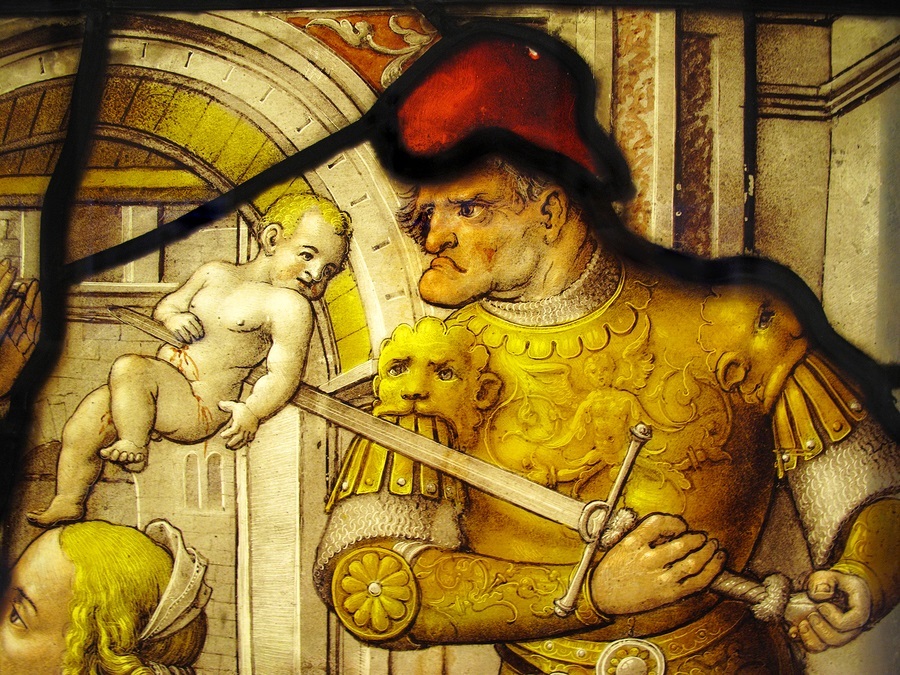
Posted on 11/10/2015 2:19:31 PM PST by Sopater
How Did We Get Here? The Slippery Slope of Government “Protectionâ€
by Monica Mears
Health Impact News
When most people today hear of a terrible child abuse case, their immediate reaction is to call on the government to protect the child and bring justice to bear on the situation. This reliance upon government to enforce child protection, rather than families, churches or non-profit groups, is a relatively new concept in history.
As American government has grown ever larger in response to society’s expectations that it should be all children’s protector, Americans have discovered these good intentions have created a system that is becoming more and more intrusive, demanding and corrupt. Parents’ protests, state hearings and local media attention are gradually bringing the public’s attention to a Child Protective Services (CPS) system that has the power to rip children from their parents – and do it without any of the civil rights and protections ALL American citizens are guaranteed.
How did a government service meant to protect children become something entirely different? How and when did CPS start – and why are Americans facing its growing power without even basic civil rights?

The concept that children have any right to protection beyond whatever their parents do or don’t provide is a relatively new concept, historically. In fact, child mortality was very high throughout much of history, and children were not treasured, as they are today, but seen as property, a commodity for barter by their fathers, and often a burden for the poor and disadvantaged.
Many ancient cultures, including the Incas, the Shang Dynasty in China, the Etruscans of present-day Italy, the Canaanites[1] and the people of Carthage, North Africa,[2] commonly sacrificed children to appease their gods and bring good fortune.
In several hundred studies published by Lloyd deMause and his associates in The Journal of Psychohistory, they have provided extensive evidence that the history of childhood has been:
“a nightmare… The further back in history one goes–and the further away from the West one gets–the more massive the neglect and cruelty one finds and the more likely children are to have been killed, rejected, beaten, terrorized and sexually abused by their caretakers.â€[3]
Forced labor which was often both dangerous and required long hours, early marriages, sexual abuse of children (male and female), and brutal “discipline†in the form of beatings, starvation or worse, all these were commonplace for many children around the world.
Sadly, there are still areas of the world today where these things occur. Even in the U.S. as recently as the 1980s, doctors did not believe infants could feel pain and would perform major surgery on babies without benefit of any type of anesthesia or pain relief.[4]
The beginnings of concern for children’s welfare are first noted in the 13th century in Europe, where the first child rearing tracts were published, disapproval of abandonment of children and pedophilia was expressed, and religious leaders for the first time began to warn against sexual molestation of children. The fifteenth and sixteenth centuries in Western Europe represented the great watershed — vastly improved child-rearing practices. [5] By the mid-1500s in Europe, the first legal protections from sexual abuse were offered to children.[6]
After several thousand years, societal concern was finally expressed for children’s well-being. Could it be the rise of a middle class, and better prosperity in Western civilization around this time, or was it the sea-change in moral influence which coincided with the Protestant Reformation, or was it the new availability of information through the invention of the printing press? Whatever the reason, it is in Western Europe at this time that the modern CPS state can trace its roots.
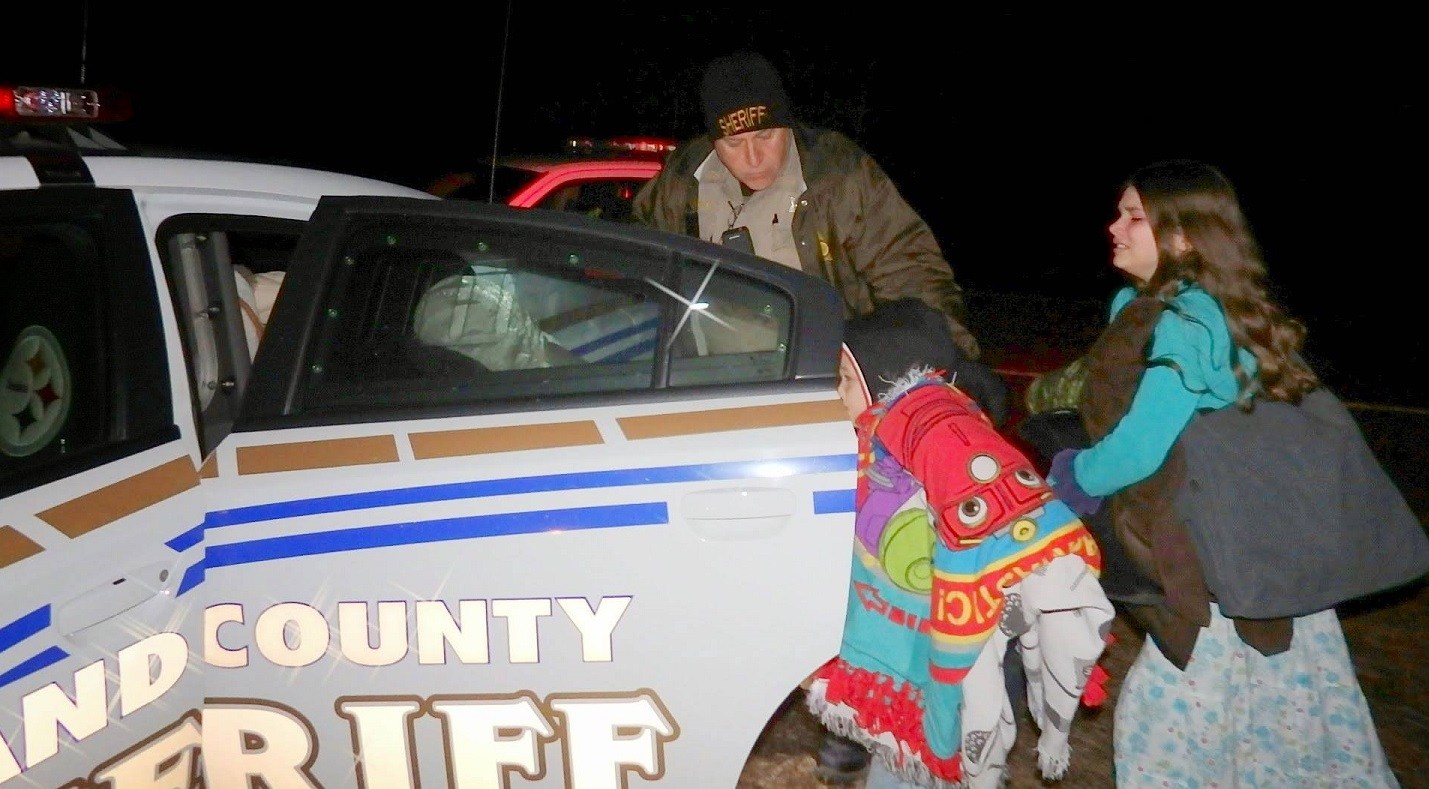
Stanley family children being removed from home during the night because the father allegedly used an unapproved mineral supplement. Story here.
By early 18th century England, common law had established a legal concept called parens patriae – Latin for “father of the country†– identifying the king as a protector or supreme guardian of those classes threatened by forces beyond their control, particularly “charities, infants, idiots, lunatics.â€[7]
The concept can be found as far back as ancient Greece, when Aristotle postulated that the government has two basic powers: the police power to protect its citizens from danger and harm (known as the “police powerâ€), and its parens patriae power (a later Latin term applied to this concept by Roman Law) to help those in need of parental-type care, i.e., sustenance, protection, nurturing, and education.[8]
Child protective services traces back to parens patriae –a legal concept still used today in the U.S. which was inherited from a time when it was assumed the king could do no wrong. Amazingly, this assumption that the state as “parent†is viewed as capable of achieving only good still exists giving the American CPS system virtually unlimited power with very little oversight over those it chooses to label “unfit.â€
“Before the spread of nongovernmental child-protection societies beginning in 1875, intervention to protect children was sporadic, but intervention occurred. Children were not protected on the scale they are today, but adults were aware of maltreatment and tried to help,â€
notes John Myers in A Short History of Child Protection in America.
In 1875, the first nongovernmental charitable society devoted to child protection was created, called the New York Society for the Prevention of Cruelty to Children (NYSPCC). This group is still in existence today.
Myers notes that news of the NYSPCC spread and by 1922, about 300 charitable child protection societies were scattered across America. However, for much of the twentieth century, many cities and nearly all rural areas had little or no access to formal child-protective services.
For most abused and neglected children help came-if it came- from family and neighbors willing to get involved, from police, and from courts…The call for government child protection coincided with the increasing role of state and federal governments in social services…
During the early twentieth century, states created or strengthened state departments of welfare, social services, health, and labor. Creation of the federal Children’s Bureau in 1912 broke the ice, followed by the Sheppard-Towner Act, which provided federal money from 1921 to 1929 for health services for mothers and babies.[9]
As for the federal government, prior to 1935, Washington, D.C., played an insignificant role in child welfare policy and funding.
Increasingly in the early part of the 20th century, Americans turned to government for help with a wide variety of issues. The legal concept of parens patriae (government as parent) was used to establish a juvenile justice system during this time. The rise of child protection as a government responsibility coincided with this new attitude.
In 1917, an authoritative text was published for American social-service and welfare workers. A Social History of The American Family: From Colonial Times to the Present, by Dr. Arthur W. Calhoun stated:
American history consummates the disappearance of the wider [or extended] familism and the substitution of the parentalism of society…. The new view is that the higher and more obligatory relation is to society rather than to the family; the family goes back to the age of savagery while the state belongs to the age of civilization. The modern individual is a world citizen, served by the world, and home interests can no longer be supreme.
This radical concept, first noted 100 years ago, has slowly crept into the heart of the U.S. legal system, with parens patriae as the legal tip of today’s monolithic CPS system.
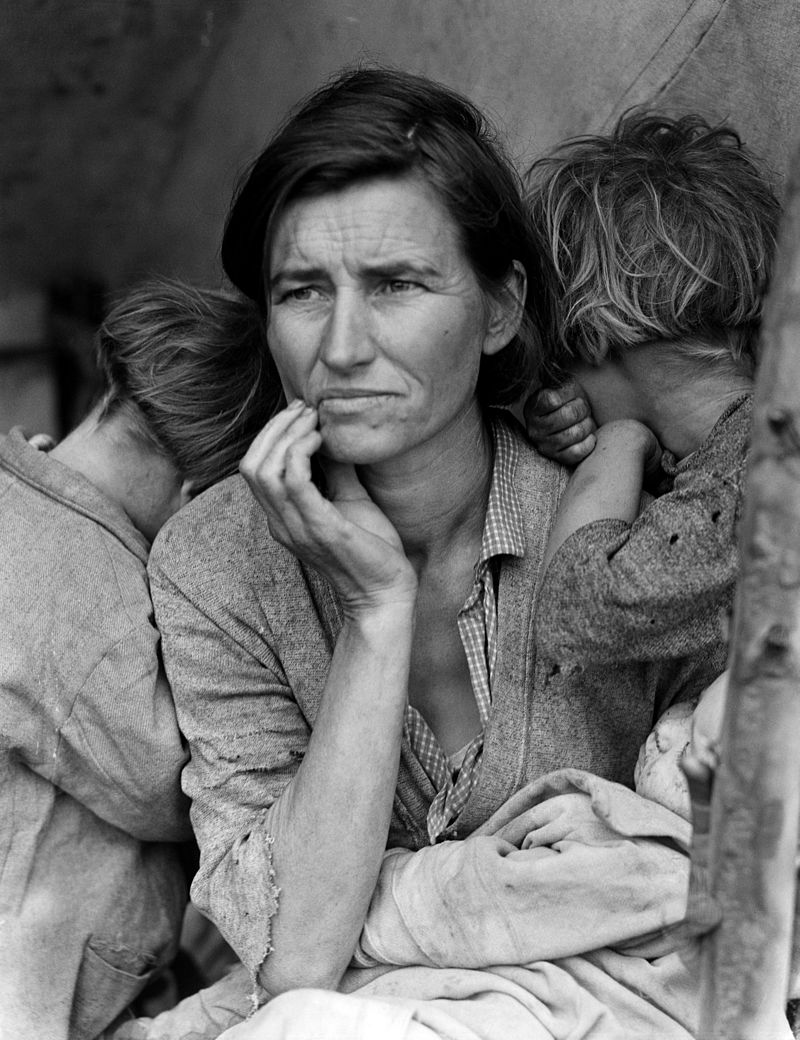
Dorothea Lange’s Migrant Mother. Image source.
In the 1930s, the Great Depression brought about circumstances where federal government involvement in “social welfare†was welcomed. In 1935, as part of President Roosevelt’s New Deal, Congress passed the Social Security Act which created old-age pensions, unemployment insurance, and vocational services, as well as Aid to Dependent Children, which provided millions of dollars to states to support poor families.
The Social Security Act authorized the Children’s Bureau:
to cooperate with state public-welfare agencies in establishing, extending, and strengthening, especially in predominantly rural areas, [child welfare services] for the protection and care of homeless, dependent, and neglected children, and children in danger of becoming delinquent.
During this time, child labor laws and compulsory school attendance laws were also enacted, again utilizing parens patriae, affirming that the government could usurp parental authority in education and labor practices.
As its preceding generation had acclimatized to federal assistance for all areas of family and home life, a new generation began to recognize child abuse as a social problem which, naturally, it expected the government to solve.
The blockbuster article The Battered Child Syndrome by pediatrician Henry Kempe and his colleagues in 1962 played a leading role in bringing child abuse to national attention. The medical profession and soon the media captured public and professional attention with news stories and journal articles around child abuse.
Congress responded to public concern with amendments to the Social Security Act in 1962 which required states to pledge that by 1975 they would make child welfare services available statewide. This fueled expansion of government child-welfare services, including protective services.
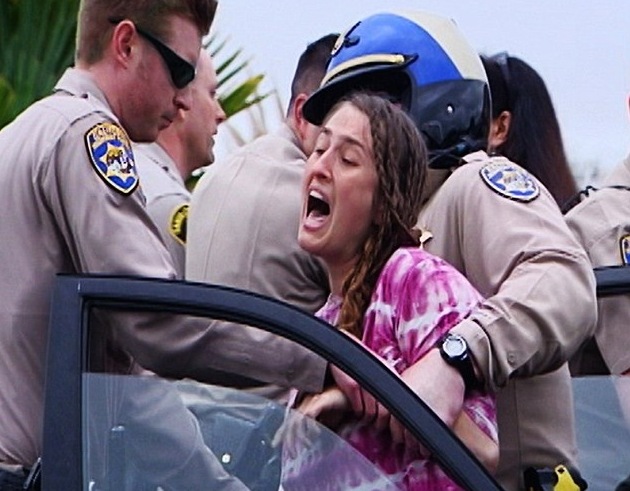
Erica Carey being arrested in California after law enforcement took her three children away from her and her husband, while they were driving back to Washington State. Photo courtesy King 5 News video. Story here.
It is at this juncture that warning voices begin to appear regarding the good intentions of those pushing for greater federal involvement in child protection.
Widely recognized psychiatrist and social critic Dr. Thomas S. Szasz noted:
Under the doctrine of parens patriae… it is recognized as legitimate that, in some circumstances, people may be treated as stupid children, and the government as their wise parent… In brief, to whatever extent we bestow the power of parens patriae on the government, to that extent we grant it despotic powers. Nor can we expect that such powers, once granted to specific agencies, will remain localized. On the contrary, the process will spread, and unless halted, will envelop the state. [10]
Yet concerns over giving unlimited power to the government, in this most precious and personal area of life, went unheeded. The federal government played a major role in shaping the nationwide system of governmental child protective services in place today through The Child Abuse Prevention and Treatment Act of 1974 (CAPTA).
Federal funds were authorized to improve states’ responses to physical abuse, neglect, and sexual abuse, as CAPTA focused particular attention on improved investigation and reporting.
In addition, CAPTA marked the final passing of privately funded, nongovernmental child protection societies. Congress periodically renewed CAPTA, and this legislation remains the foundational force behind the federally-funded CPS state today.
Two decades later, in an effort to avoid children languishing in foster care for years, Congress passed The Adoption and Safe Families Act of 1997 (ASFA), which was labeled by The Washington Post in January 1998 as
“the most significant change in federal child-protection policy in almost two decades.â€[11]
Where once the emphasis was placed on trying to eventually reunite children with their biological parents, state and federal guidelines now favored fast-tracking adoption of children in foster care. This required a new focus on terminating the biological parents’ rights.
Dorothy Roberts, a professor of law at Northwestern University and author of Shattered Bonds: The Color of Child Welfare, argues that ASFA is a wrong-headed assault on family preservation that goes far beyond its goal of ensuring children’s safety and establishes “a preference for adoption as the means of reducing the exploding foster care population.â€[12]
Unfortunately, while the child protection system was intended to help, Health Impact News with their “Medical Kidnap†website and other media continue to document countless abuses of the CPS system, as it grows ever more “despotic,†just as Dr. Szasz predicted four decades ago.
The system no longer functions – in fact, in most cases CPS assumes that the “safest†way to handle almost any complaint it receives, based merely on any allegation, without any evidence, is to remove the child from the home.
According to Massachusetts attorney Gregory Hession:
Many judges now believe that the government creates and grants rights, rather than preserves existing rights that are bestowed by our creator and cannot be taken away. Thus, they will ignore your parental rights if it suits them.
Judges often explain rights away if they do not favor them politically… Parents’ rights to direct the upbringing of their children were never questioned until recently.
Now, the state sees itself as the parent, and it lets you have temporary custody of your own child, unless and until you do something the state doesn’t like. Then the child goes back to its true parent – the state….[13]
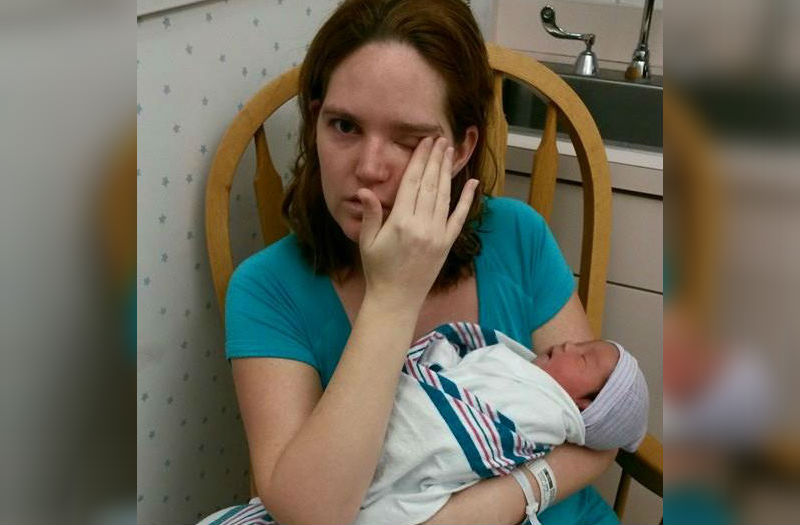
7 children including a newborn baby were seized from their parents simply because the mother had a learning disability. Story here.
Throughout the United States’ history there has been an inexorable trend toward more and bigger government in every aspect of its’ citizens’ lives. It’s not difficult to project where the system is headed if this trend continues unchecked.
In the past few decades, parens patriae was used to litigate against tobacco companies and has been suggested as a basis for obesity litigation. Literally, if a child is overweight, the government may someday consider this as reason enough to remove that child from their parents.
Legal scholars admit:
“…for much of its history as part of American jurisprudence, the boundaries and appropriate uses of parens patriae have been poorly defined.â€[14]
This is a legally open door for the government to continue to insert itself ever-more intimately in the private lives of parents and their children.
Though parens patriae is the historical basis for today’s government involvement in parents’ and childrens’ lives, the concept that there are limits to any family’s privacy and rights has moved into many other spheres in American institutions and government. Health Impact News regularly documents the many ways the medical profession has now become an arm of the government – “diagnosing†abuse, which is in fact a legal accusation, not a disease.
In yet another area of life, if a parent is disabled, the government can also use this as grounds for a child’s removal.
According to a study of the National Council on Disability:
“fully two-thirds of dependency statutes allow the court to reach the determination that a parent is unfit…on the basis of the parent’s disability.â€
Parents with disabilities face child removal rates of anywhere from 40 to 80 percent depending on the nature of their disability – far above the national norm. Those who are deaf or blind face “extremely high rates of child removal and loss of parental rights.â€
The study concludes, “Clearly, the legal system is not protecting the rights of parents with disabilities and their children.â€[15]
Additionally, legal scholars can find no “parental rights†within the Constitution. According to Parental Rights.org, federal judges are:
“citing a mounting belief that no right can be protected by the federal courts unless explicitly stated in the Constitution … Parental rights violations are on the increase across the country, as courts exchange parental involvement for government control in the lives of America’s children.â€
In fact, England’s monarchy demonstrated where our system is headed:
“… parens patriae later evolved … whereby the king had broad authority to regulate and control ‘almost everything’ that happened within his jurisdiction.â€[16]
Without accountability and fueled by federal money, state CPS actions may become, and some would argue already are, those of a lawless tyrant.
Despite this, a growing movement of parents, grandparents, whistle blowers, former foster children and lawyers are rallying to demand reform. There are a number of solutions to the abuses within the CPS/foster care system and through concerned citizens’ efforts, awareness of CPS abuses is growing. See:
Child protection services, though intended for good, have inherited assumptions from a time when kings were thought infallible. Thomas Jefferson rightly noted:
Experience hath shewn, that even under the best forms of government those entrusted with power have, in time, and by slow operations, perverted it into tyranny.
It is time to rein in the vague, unlimited powers of parens patriae – no government agency can ever replace the love and nurture of parents.
About the Author
Monica Mears holds a Master’s in Journalism from Regent University and writes professionally in a broad variety of genres. She considers her greatest status symbol to be her marriage of 15 years and two beautiful, healthy daughters.
References
[1] 10 Ancient Cultures That Practiced Ritual Human Sacrifice,†by Paul Jongko, TopTenz.net, July 29, 2014 http://www.toptenz.net/10-ancient-cultures-practiced-ritual-human-sacrifice.php
[2] Relics of Carthage Show Brutality Amid the Good Life,†by Malcolm W. Browne, New York Times, published: September 1, 1987 http://www.nytimes.com/1987/09/01/science/relics-of-carthage-show-brutality-amid-the-good-life.html
[3] “The History of Child Abuse,†by Lloyd deMause, The Journal of Psychohistory 25 (3) Winter, 1998. http://psychohistory.com/articles/the-history-of-child-abuse/
[4] Lawson, J. Letter. New England Journal of Medicine, (May 26, 1988):P. 1198 http://www.nocirc.org/symposia/second/chamberlain.html
[5] “The History of Child Abuse,†by Lloyd deMause, The Journal of Psychohistory 25 (3) Winter 1998.
[6]Social Work and Child Sexual Abuse (Journal of Social Work and Human Sexuality, Vol 1, No 1/2) , by David A. Shore and Jon Conte, published by Routledge (1982), p. 22
[7] The Checkered Career of Parens Patriae: The State as Parent or Tyrant? By George B. Curtis, DePaul Law Review, Volume 25, Issue 4 Summer 1976. http://via.library.depaul.edu/
[8] “Civil Commitment: Past, Present, and Future,â€An Address by Paul F. Stavis at the National Conference of the National Alliance for the Mentally Ill, Washington, D.C. July 21, 1995. http://www.treatmentadvocacycenter.org/component/content/article/360
[9] www.americanbar.org “A Short History of Child Protection in America†By JOHN E.B. MYERS, Family Law Quarterly, Volume 42, Number 3, Fall 2008 pp. 450-455.
[10] Thomas S. Szasz, Law, Liberty and Psychiatry (New York: Macmillan, 1963), p. 151.
[11] PBS series, “Failure to Protect,†FRONTLINE, January 2003. http://www.pbs.org/wgbh/pages/frontline/shows/fostercare/inside/asfa.html
[12] PBS series, “Failure to Protect,†FRONTLINE, January 2003. http://www.pbs.org/wgbh/pages/frontline/shows/fostercare/inside/roberts.html
[13] Hession’s blog, “Mass Outrage†http://www.massoutrage.com/how–why-can-dcf-kidnap-your-child.html
[14] “Parens Patriae: A Flawed Strategy for State-Initiated Obesity Litigation†John B. Hoke, 54 Wm. & Mary L. Rev. 1753 (2013), http://scholarship.law.wm.edu/wmlr/vol54/iss5/7
[15] “Parental Rights Amendment Inclusive of Parents with Disabilities,â€ParentalRights.org newsletter, October 27, 2015
[16] “Parens Patriae: A Flawed Strategy for State-Initiated Obesity Litigation†John B. Hoke, 54 Wm. & Mary L. Rev. 1753 (2013), http://scholarship.law.wm.edu/wmlr/vol54/iss5/7
Is anything being done at Free Republic to prevent the unwanted symbol insertion inserted into our posts?
Perhaps we need an ‘extra special assessment’ in order to hire an expert who can end this annoyance.
They are California, Massachusetts, New York, and Washington.
Although it's only fair to note that the word "Washington" is only used once as the name of the Western state, and then only because the affected party was escaping to Washington.
Yeah, it seems that all of the quotation marks were replaced by “hieroglyphics”.
Not sure why... Or if anyone is working on it.
It certainly is annoying.
Disclaimer: Opinions posted on Free Republic are those of the individual posters and do not necessarily represent the opinion of Free Republic or its management. All materials posted herein are protected by copyright law and the exemption for fair use of copyrighted works.